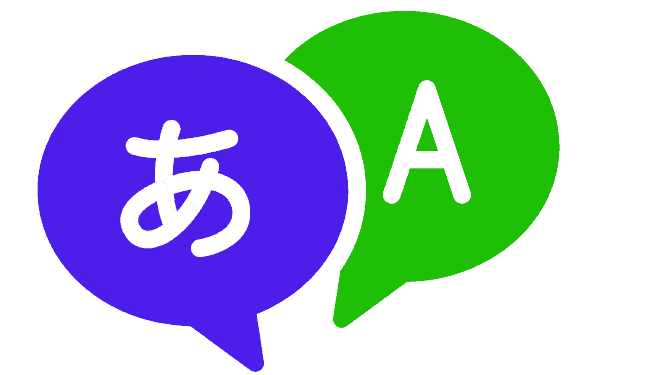Are you prepared to go out on a linguistic journey but aren’t sure which language learning app to choose? Meet the contenders: uTalk and Duolingo – the dynamic duo vying for your language-loving heart! 🌍💬
We’ll uncover the hidden features of both applications in this definitive comparison, guiding you toward the best decision. With its interactive and immersive methodology, uTalk claims to accelerate fluency unlike anything else. The well-known language juggernaut Duolingo provides gamified learning with a spice of fun.
So, are you team uTalk or team Duolingo? Let’s unravel the language’s enchantment and find your ticket to fluency! 🌟🎉”
uTalk vs Duolingo Compared

- Number of Languages: 43
- Free Trial (or free version): Yes
- Speech Recognition: Yes
- Avg. Lesson Length: 4 Minutes
- Pricing: $6.99
- Money Back Guarantee: No
- Grammar Instruction: Average
- Live classes: No
- Progress Tracking: Yes
- Tests/Quizzes: Yes
Overview of Duolingo
With its gamified approach to language learning, Duolingo is a well-known and well-respected language learning program. It has amassed millions of users worldwide and has emerged as a top option for language lovers of all ages. The app is simply accessible for learners who are on the move since it is available on both mobile platforms and online platforms.
The main principle of Duolingo is to make learning languages entertaining and interesting. This is accomplished via the app’s use of game-like features, such as gaining experience points, leveling up, and obtaining virtual prizes for accomplishing tasks and challenges. Users are encouraged to maintain motivation and keep track of their progress thanks to this gamification feature.

Learners can pick from a wide variety of languages on Duolingo. It has well-known ones like Spanish, French, German, and Chinese as well as less often taught ones like Irish, Swahili, and Welsh. The range of languages makes it possible for students to pick a course that suits their unique interests and objectives.
The engaging, bite-sized courses on the app enable users to fit language practice into their hectic schedules. From beginner to intermediate, the curriculum includes reading, writing, listening, and speaking.
The majority of the app’s functionalities are accessible by users free of charge. However, there is also a paid version called “Duolingo Plus” that provides offline access, ad-free learning, and other extra features.
Through its community features, the app promotes an encouraging and engaging learning environment. Language clubs, debates, and language partners may improve learning and give real-world language practice.
Duolingo is an entertaining option for language learners. It has gamified approach and user-friendly design, but some detractors claim that the program may not be as thorough as conventional language classes or that it may not go in-depth with grammar and complicated linguistic structures. Nevertheless, Duolingo could be a helpful and pleasant tool for people who are just starting out or who want to pick up a new language.
My Duolingo Experience
My experience with the Duolingo app and website started with a simple language selection and a quick question about why I wanted to learn. I quickly became acquainted with a series of simple questions, ranging from item identification to translation exercises, after choosing French. These activities skillfully blended problems with auditory components, enhancing the educational process.
Sentence completion exercises further deepened my engagement, all while accompanied by melodious music that added a touch of creativity to each interaction. The availability of a global scoreboard stoked my competitive nature. It allowed me to compare my development to that of learners all across the globe.
Gems and hearts‘ gamified components added an additional degree of incentive, although I sometimes had trouble navigating. The user interface showed potential, however it was relatively difficult to switch between various areas or leave active classes.
As I dug further into the lectures, I became aware of a pattern of structural similarities, which made me want for more varied study materials. One obvious omission in the free edition was the absence of a speaking option, which I believed may have improved the entire learning experience.
In summary, Duolingo provided an engaging fusion of gamification, audio-based challenges, and entertaining learning in my experience. Despite certain navigational challenges and repetitiveness, the platform’s capacity for development and dedication to fun language learning were clear to me the whole time.
Gamified Learning: Duolingo’s gamified approach makes language learning fun and engaging, motivating learners to progress through levels, earn rewards, and maintain streaks.
Structured Curriculum: The app’s structured curriculum guides learners through progressive lessons, ensuring a well-rounded understanding of the target language.
Variety of Languages: With 43 languages to choose from, Duolingo offers a wide range of options for learners interested in exploring different languages.
Bite-sized Lessons: Duolingo’s short and accessible lessons allow learners to study in small increments, making it convenient for busy schedules.
Speech Recognition: The app’s speech recognition feature provides valuable feedback on pronunciation, helping learners improve their speaking skills.
Community Interaction: Duolingo fosters a sense of community through language clubs and forums, allowing learners to connect with others and share experiences.
Offline Access: Duolingo’s offline mode enables learners to continue their language studies even without an internet connection, making it suitable for travelers and those with limited connectivity.
- Limited Grammar Explanation: Duolingo’s focus on practice may lack in-depth grammar explanations, leaving some learners seeking additional resources for comprehensive grammar understanding.
- Repetitive Exercises: Some users may find the exercises repetitive over time, potentially leading to monotony and decreased motivation.
- Limited Speaking Practice: While speech recognition is beneficial, Duolingo’s speaking exercises are not as extensive as other language learning methods, which may hinder speaking fluency.
- Lack of Cultural Context: Duolingo’s lessons may not fully explore cultural nuances, which can be important for language learners looking for deeper cultural understanding.
- Limited Vocabulary Scope: The app’s vocabulary range may not cover specialized or advanced language topics, limiting learners’ language proficiency in certain domains.
Overview of uTalk
With its interactive and immersive learning methods, the language learning app uTalk makes learning new languages fun and easy. The goal of the app is to provide users useful language skills so they can participate in everyday interactions and speak successfully in their target language. With an emphasis on spoken language, it gives practical vocabulary and phrases top priority to assist learners in developing their speaking confidence.
uTalk’s extensive language selection is one of its best qualities. Over 150 languages are supported by the program, including both frequently used languages and obscure ones. This wide language collection makes uTalk appealing to learners interested in languages from different places and cultures.
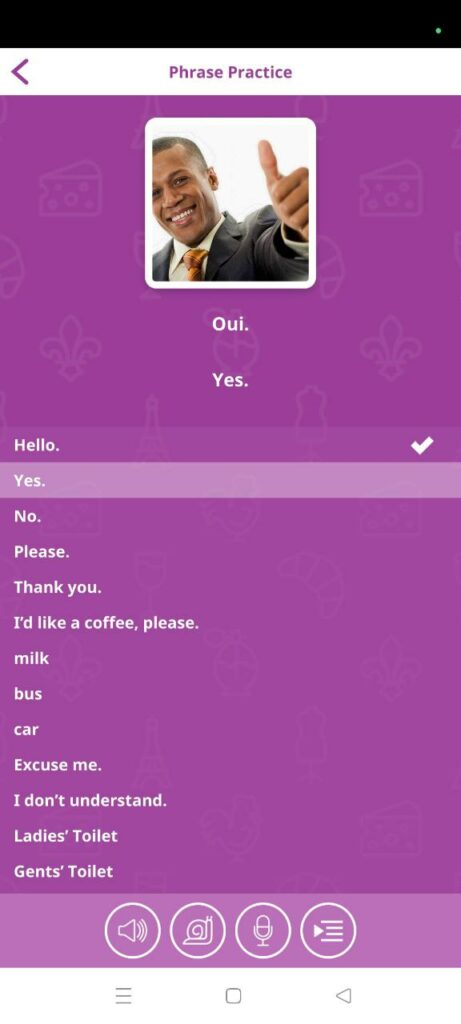
The focus of uTalk’s language learning methodology is on speaking practice and active involvement. The program uses native speakers to deliver realistic pronunciation and natural conversational examples. This allows learners to listen and practice speaking as in real life.
uTalk’s interactive classes let students practice speaking in diverse situations via role-playing. By encouraging users to repeat words and phrases, the app ensures that language abilities are reinforced and retained.
For learners of various ages and backgrounds, navigating uTalk app is simple because to its user-friendly layout. Users can move through classes at their own speed and monitor their progress over time, thanks to the app’s simple and easy architecture.
The app allows offline access to lessons and resources, which is useful for mobile learners. Users are able to keep studying with the help of this function without always requiring an online connection.
Both free and paid membership options are available on uTalk. While the premium membership grants complete access to all languages and features, the free edition also offers a a lot of functions and a huge amount of language material.
My uTalk Experience
My exploration of the uTalk app and website revealed a refreshing level of interactivity, setting it apart from Duolingo. The onboarding procedure was very easy to follow and completely flawless. When I chose French, I was presented with a wide range of study alternatives that suited to various inclinations. uTalk presented me with a wide variety of tools to improve my language abilities, ranging from interesting games to phrase practice.
The gamified mode, where I had to choose the right match after listening to phrases associated with four cards, was one noteworthy element. I was able to listen to phrases and record my own voice for comparison during the portion on phrase practice. In the speaking game, I recorded myself using photos that matched. However in the memory game, I had to choose the appropriate image depending on the word that was said.
The free edition of uTalk turned out to be a veritable gold mine of educational materials. It addressed fundamental concepts like first words and directions as well as real-world circumstances including traveling, raising a family, cooking, numbers, holidays, and vacations, just like Rosetta Stone.
The online version provided a smoother experience than the mobile app when comparing the user interfaces. However, I discovered that the text size in the app was significantly smaller, which sometimes made navigating a little bit more difficult.
In short, I found uTalk to be a tempting alternative for language enthusiasts, thanks to its entertaining and varied learning possibilities. Even in the free edition, it has a user-friendly onboarding process, gamified components, and a wealth of learning tools that make for an engaging and successful language learning experience. But to access the free material, you have to download uTalk app, web-version won’t provide free materials.
Practical Vocabulary: uTalk focuses on providing learners with practical words and phrases on various subjects, enabling them to use the language immediately in real-life situations.
Native Speaker Audio: The app offers native speaker audio recordings, allowing learners to hear authentic pronunciation and intonation, improving their speaking and listening skills.
Immersive Learning: uTalk’s interactive and immersive lessons, including role-playing scenarios, create an engaging environment for learners to practice speaking and conversation.
Flexibility for Language Learners: uTalk is designed to cater to learners of various language backgrounds. It works for speakers of more than 150 languages, allowing for over 20,000 language learning combinations.
Traveler’s Companion: With its focus on practical phrases, uTalk is an excellent tool for travelers to quickly learn essential language skills for communication during trips.
Pronunciation Practice: uTalk’s repetition and imitation of native speaker audio provide learners with ample opportunities to refine their pronunciation and sound more natural.
Limited Grammar Explanation: uTalk’s approach may not extensively cover grammar rules and structures, which could be a drawback for learners seeking in-depth grammar knowledge.
Lack of Comprehensive Language Learning: While uTalk excels in practical vocabulary and speaking practice, it may not provide a comprehensive language learning experience that covers all aspects of language acquisition, such as reading and writing.
Fewer Language Learning Features: Compared to some other language learning apps, uTalk may have fewer features, such as progress tracking and community interaction, which some learners may find valuable.
Duolingo & uTalk Detailed Comparison
User Interface and Experience
I can safely offer my experience with their user interfaces and general user experiences as a language lover who has had the pleasure of utilizing both uTalk and Duolingo.
Starting with uTalk, I discovered that the app’s user interface was clear, straightforward, and simple to use. When I first opened the program, I saw a visually pleasing interface with straightforward choices for choosing languages and accessing different functions. The procedure of choosing a language was simple, and I valued the broad collection of more than 150 languages that allowed me to study several lesser-known languages that I had always wanted to learn.
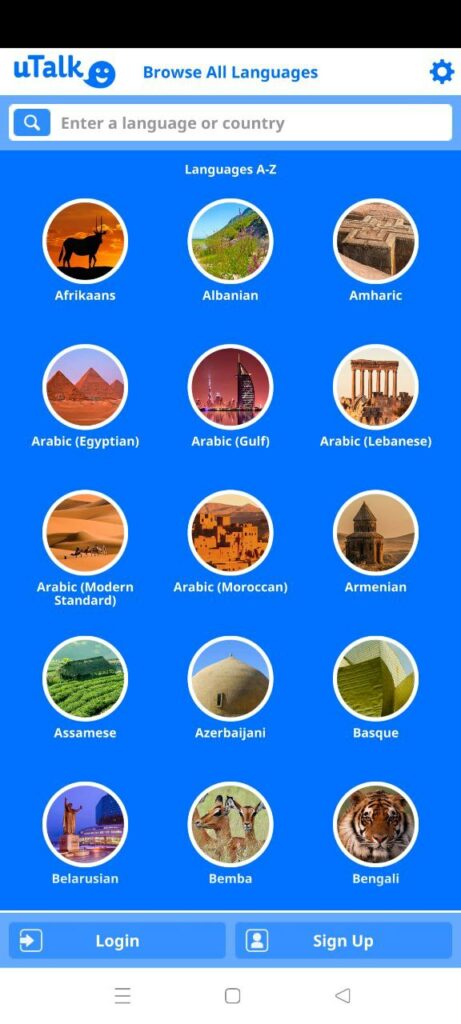
I was impressed by the interactive style once I was within the classes. The app’s utilization of native speakers for conversation and pronunciation gave the learning experience a realistic feel. Role-playing games gave me the chance to practice speaking in many real-life circumstances, which I found enjoyable. The program pushed me to reinforce my learning by repeating words and phrases, which helped me memorize them. The smooth UI of uTalk web & app reminded me of Mondly.
However, my experience with Duolingo started off with a gamified language learning experience. The app’s gamification elements- earning points, progressing up, leagues and getting rewards—kept me motivated and involved throughout my language learning journey.
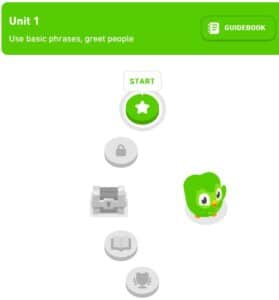
The bite-sized courses in Duolingo are ideal for cramming in a fast practice session between breaks. I loved the range of tasks, which included speaking and listening as well as multiple-choice questions. I was able to remedy errors right away thanks to the app’s built-in voice recognition capability and fast feedback on my replies.
Both applications offered offline access, which was very helpful when I needed to study without an internet connection or while traveling. I found the ability to download courses and continue studying even in far-off places to be a really helpful tool.
Language Course Selection
I must admit that after looking over the language course options on both Duolingo and uTalk, the difference in the amount of languages available is fairly noticeable. 43 languages are available on Duolingo, which is outstanding and includes both some less popular languages as well as those that are commonly spoken. uTalk, on the other hand, has a huge collection of 150 languages, giving it a platform for learners interested in a variety of languages, including indigenous ones.
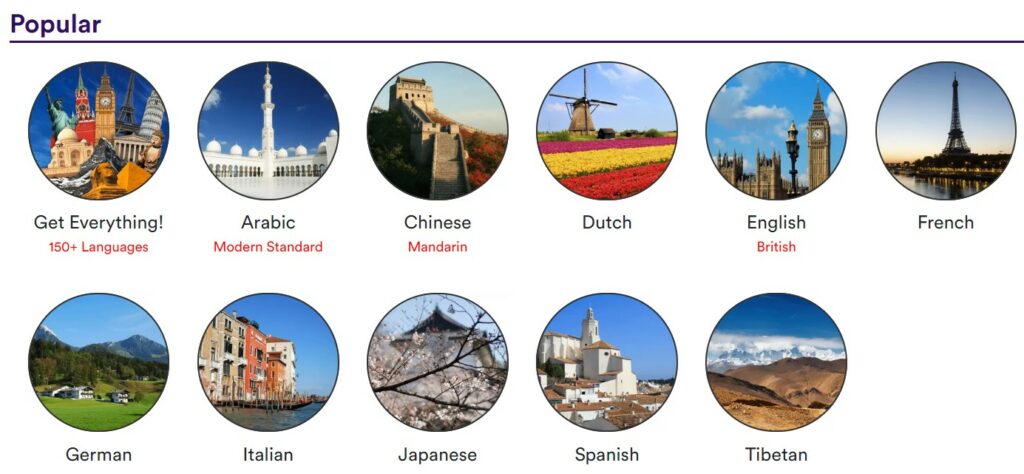
I noticed that Duolingo’s courses average 4 minutes. For students who want brief and easy practice sessions that easily fit into their hectic schedules, this bite-sized method is fantastic. On the other hand, uTalk’s classes are a little bit longer, lasting on average 5 minutes. Even though each lesson is still pretty short, this extra minute allows for a deeper look at the language material. I found this especially helpful for understanding new words and ideas. If you feel like lessons are too basic, you can always skip a level in Duolingo.
Additionally, in order to accommodate students from various linguistic backgrounds, both platforms provide a variety of competency levels. For most languages, Duolingo offers a beginning to intermediate progression route, however others provide more advanced material. Beginners and people who wish to learn travel and conversation terms in a practical and engaging way may take uTalk classes.
Teaching Method
Duolingo engages users in language learning via a range of teaching techniques. Its gamified methodology incorporates game aspects with language learning, making the process entertaining and engaging. For learners with hectic schedules or those who prefer brief bursts of learning, the app’s bite-sized courses, which last an average of 4 minutes, provide quick and convenient practice sessions.
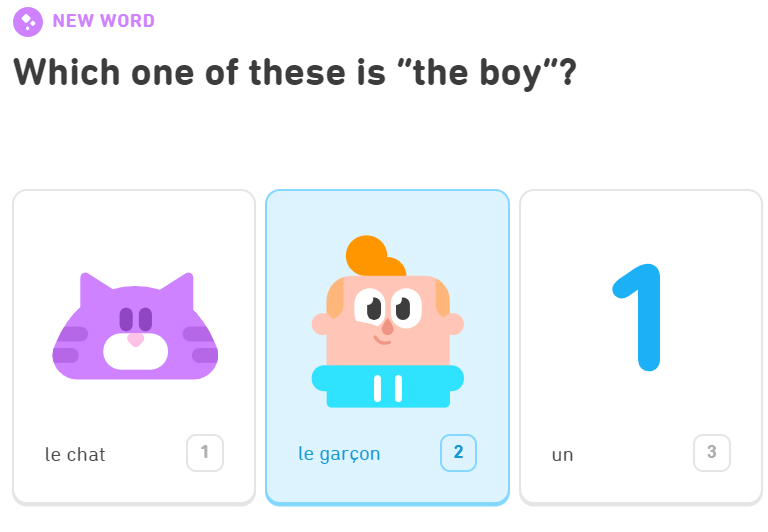
Learners are guided via a methodical learning route by the platform’s planned curriculum and increasing stages, guaranteeing a comprehensive mastery of the language. The activities on Duolingo provide a variety of learning opportunities, including as multiple-choice questions, translation assignments, and speaking drills. Additionally, learners may improve their pronunciation and get immediate feedback on their speaking abilities thanks to the integrated voice recognition technology.
uTalk takes a different approach, focusing on practical vocabulary and real-world conversation right from the start. Compared to Duolingo’s shorter lessons, the app’s courses, which last an average of 5 minutes, allow for a little more in-depth investigation of language material. The focus on in-the-moment speaking practice and role-playing situations creates an immersive atmosphere that motivates language learners to use the language in everyday situations.
This language learning app uses the audio of native speakers to provide accurate pronunciation and examples of how to use natural language. This function aids in the development of precise pronunciation techniques and listening comprehension. Due to the interactive features of the app, users may have conversations and repeat words and phrases, which helps to reinforce learning via repetition.
Gamification and Engagement
Comparing Duolingo and uTalk’s gamification and engagement features, it can be seen that each platform offers a different strategy for retaining learners’ interest and immersion in their language-learning process.
Duolingo is a master at gamification, offering a fun and rewarding language learning experience. Users are quickly drawn to the app’s vivid and aesthetically attractive layout, which creates an encouraging environment for learning. Duolingo successfully uses gamified aspects to reward persistent learning, like awarding points for accurate answers, unlocking new levels, and earning streaks for everyday practice.
Users are encouraged to compete with one another and with the game itself because to its user-friendly and straightforward design, which fosters a feeling of success as users advance through the stages. Another feature of Duolingo is its “heart” system, which encourages users to avoid errors and makes learning more difficult.
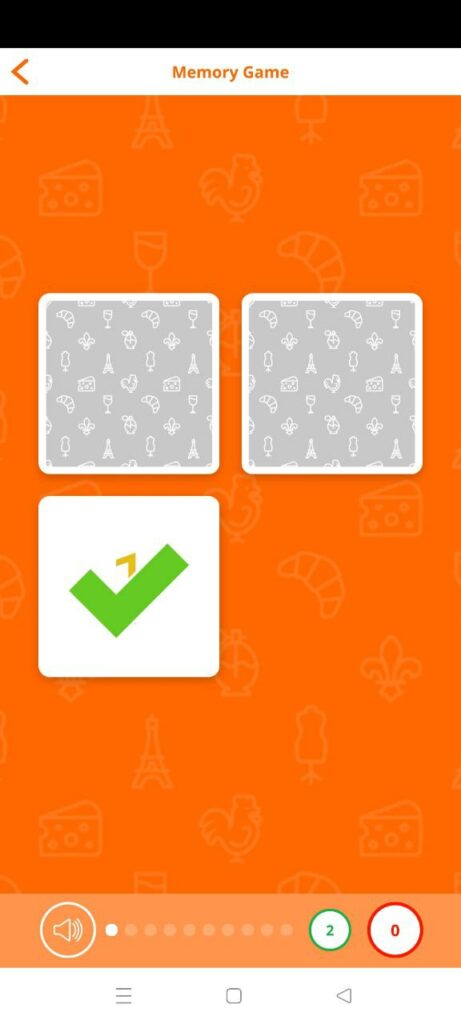
The platform’s community services, such as language clubs and forums, provide a social component by enabling users to interact with others who share their interests and exchange information about their language-learning experiences. These participation elements encourage frequent involvement and motivation by fostering a feeling of community and support among students.
uTalk’s immersive and interactive teaching strategies engage students, even though it does not concentrate on conventional gamification in the same manner as Duolingo does. The app encourages active participation with the language from the start, thanks to its focus on real-world interaction and speaking practice.
The utilization of native speaker audio and role-playing situations by uTalk produces a genuine language learning experience that gives users the impression that they are conversing with actual people. The app’s interactive features enable users to actively participate in conversations, repeat words and phrases, and converse in the language.
uTalk offers language partners and chances for user interaction in terms of social engagement. uTalk nevertheless provides a platform for students to engage and practice with others, improving their language abilities via actual exchanges, even if its community features are less robust than those of Duolingo.
Pronunciation Practice
Duolingo and uTalk both provide pronunciation practice tools, but their techniques vary.
It emphasizes pronunciation practice heavily, especially via its integrated voice recognition tool. The app assesses the pronunciation accuracy of the words and phrases that students repeat aloud during speaking activities. This quick feedback assists students in honing their pronunciation abilities and developing their spoken language competence.
Additionally, the audio exercises on Duolingo include recordings of native speakers pronouncing the activities. Learners could become more comfortable with the language’s natural intonation and cadence by listening to these recordings. The development of a more real-sounding and realistic accent is aided by regular exposure to native speaker sounds.
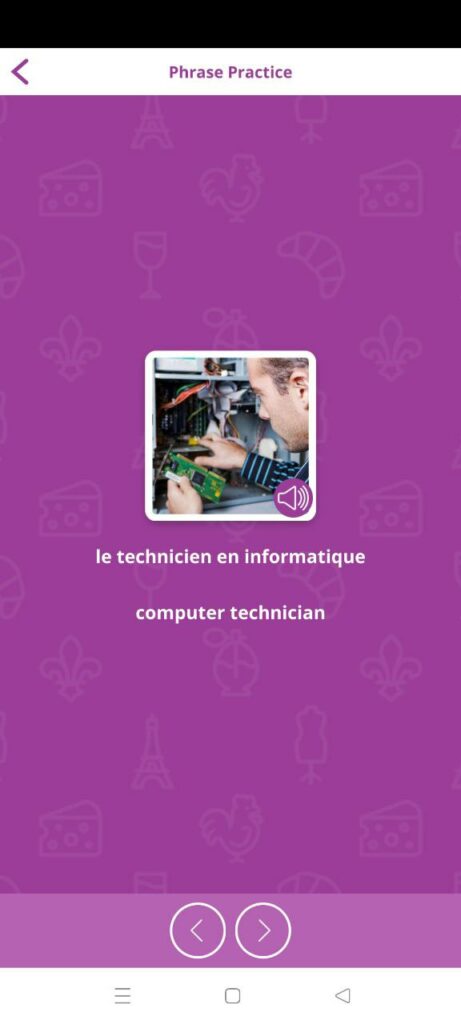
uTalk prioritizes pronunciation practice, although it does it in a different way than Duolingo. Through repetition and imitation, the software stresses pronunciation. Learners are urged to repeat the words and phrases after hearing them said by a native speaker in order to precisely emulate the pronunciation.
By actively participating and practicing, users can enhance their pronunciation abilities by mimicking native speakers. Because uTalk sessions are interactive, students have many chances to practice speaking in a variety of settings, which helps improve their overall spoken language skills.
Progress Tracking and Analytics
Duolingo and uTalk use distinct approaches to progress monitoring and analytics, providing learners with various degrees of information and insights.
It has good analytics and tracking options. Users of the app can maintain a close eye on their educational progress, thanks to the app’s extensive dashboard. Viewing daily streaks, overall development, and app use time are all available to learners. By giving users a visual depiction of their advancement, the “Crown Levels” system aids users in keeping track of their level of competency in each language.
The skill tree in Duolingo’s progress tracking also shows the learner’s progression across different language skills and courses. Users can observe the abilities they have learned and the ones that still need work. Learners can pinpoint their strengths and shortcomings, thanks to this methodical monitoring, which enables them to concentrate on certain areas for development.
Duolingo provides data-driven insights on the user’s performance in each class in addition to progress monitoring. This shows the percentage of accurate answers, the total number of them, and the questions that the user needs to practice more. The data provided by the app enable users to comprehend their learning trends and take well-informed choices to enhance their language learning experience.

Compared to Duolingo, uTalk takes a less systematic approach to progress tracking. Basic information regarding the user’s progress is provided by the app, including the number of lessons and the percentage of the course that have been completed. But unlike Duolingo, it doesn’t include a comprehensive skill tree or competence monitoring system.
Instead, uTalk places more of an emphasis on vocabulary learning and language immersion. Through the audio recordings of native speakers, the program enables students to examine their pronunciation and go over previous lectures. The goal of uTalk is to help learners develop their practical vocabulary and conversational skills by placing an emphasis on repetition and reinforcement of language material.
Duolingo’s thorough approach distinguishes out in terms of statistics and progress monitoring. Learners may monitor their language progress using the app’s progress dashboard, skill tree, and competence tracking. Access to data-driven insights improves learners’ comprehension of their performance and opportunities for development.
In contrast, uTalk’s progress monitoring is less comprehensive. It doesn’t provide the same amount of organized analytics as Duolingo, but it does let students revisit courses and work on pronunciation. Instead, uTalk places a high priority on using immersive and interactive learning techniques to expose students to real-world terminology and speech.
Mobile App Features
uTalk and Duolingo both provide a number of tools and functions to improve the language learning experience on the go when comparing their mobile app features.
Duolingo’s Mobile App Features
It is well-known for its user-friendly interface and intuitive design. There are 43 languages to learn on the app, including popular and less-popular ones. For language aficionados, the capability to study numerous languages inside the same app is a big benefit.
With points, levels, and streaks to encourage learners and keep them interested, the smartphone app offers a gamified learning experience. Through the “Duolingo leaderboard” function, users can get incentives and compete with friends and classmates, creating community and healthy competitiveness.

The voice recognition function of the Duolingo mobile app lets users improve their pronunciation and get immediate feedback. This interactive element improves speaking talents and raises learners’ confidence in their capacity for spoken language.
The smartphone app also provides offline access to the lectures and activities, enabling students to keep practicing even when there is no internet connection. Travelers and people with restricted connection benefit from this offline mode.
uTalk’s Mobile App Features:
The uTalk mobile app has a user-friendly layout for simple browsing and rapid access to language classes. With its amazing collection of more than 150 languages, the app stands out as a platform for language learners looking for a variety of language possibilities.
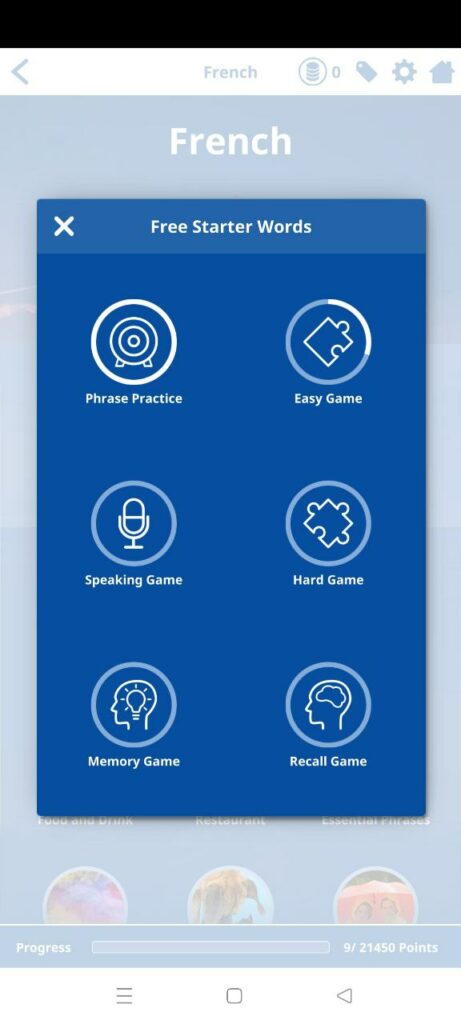
One of the app’s key features is its focus on practical vocabulary and conversation. With interactive lessons and audio from native speakers, the uTalk smartphone app makes it easier to practice speaking. The program encourages users to repeat words and phrases, which improves their pronunciation and interpersonal interactions.
The mobile app for uTalk has a capability for capturing student pronunciation and comparing it to that of native speakers. This program helps students improve their speaking skills by providing them with individualized feedback.
It’s mobile app provides offline access to classes, much like Duolingo does, enabling students to study and practice without an internet connection.
Vocabulary Building Tools
The vocabulary development tools of Duolingo and uTalk are excellent, although their techniques and features vary.
Duolingo’s vocabulary building tools are integrated into its structured lessons and exercises. As users go through the language classes, the app progressively introduces new vocabulary by presenting them with a broad variety of words and expressions. Each session focuses on a distinct theme or subject, giving students the opportunity to acquire terminology in context.
The app’s multiple-choice, translation, and word-picture matching activities reinforce new words and phrases. Learners can practice pronunciation using the built-in voice recognition technology, which helps them get more comfortable with the terminology.
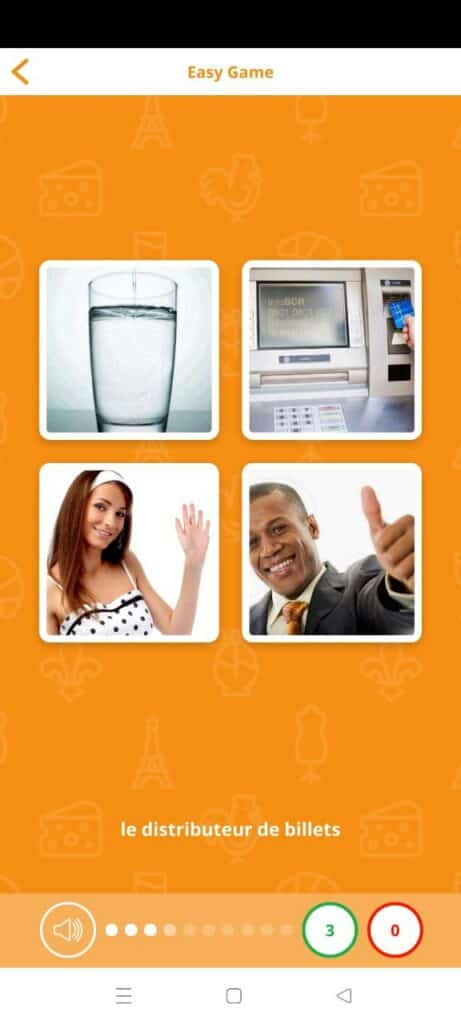
With the help of the spaced repetition method, which Duolingo uses, users are guaranteed to retain and enhance their vocabulary over time. The app’s skill tree provides a visual representation of the learner’s progress in mastering different words and topics.
The focus of uTalk’s vocabulary-building strategy is conversation and everyday language usage. The focus of the app is on teaching users important vocabulary and expressions that are applicable to daily conversation and situational contexts. Through engaging and interactive sessions, uTalk imparts vocabulary while allowing students to role-play various speaking situations.
The usage of native speaker audio recordings is one of uTalk’s distinctive characteristics. Listening to how native speakers enunciate words and phrases enables students to familiarize themselves with authentic pronunciation and intonation.
To help students in remembering new language, uTalk emphasizes repetition and reinforcement. The application promotes repetition of words and phrases, offering many chances for practice and remembrance.
Offline Learning Options
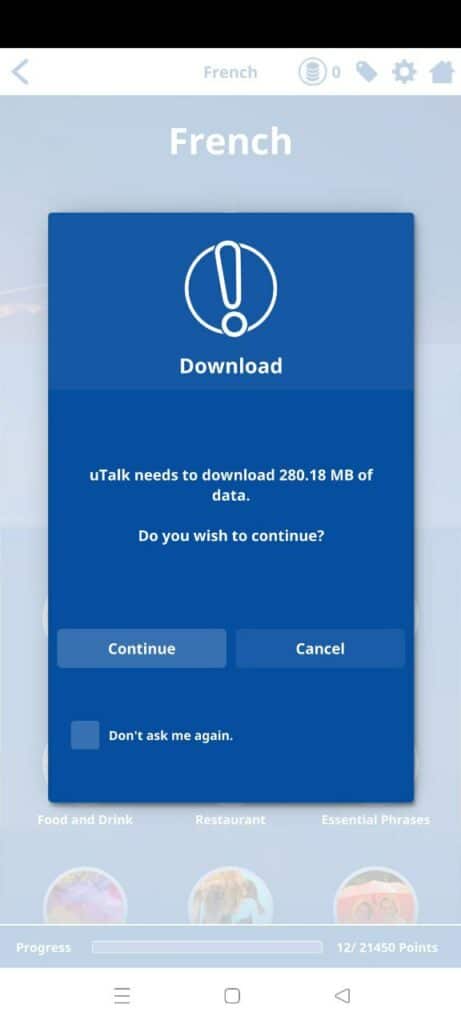
In terms of offline learning alternatives, both Duolingo and uTalk provide useful tools that let users continue learning languages without an online connection.
Through its mobile app, Duolingo offers offline access to its language courses. When online, students can save courses and activities to their device and view them later when they are offline or have poor internet connection.
The offline option in the platform enables users to continue learning and practicing even when traveling or in distant areas. This function is very useful for those who wish to fill their downtime, such as during commuting or when waiting in locations without access to the internet.
In a comparable way, uTalk’s mobile app also provides choices for offline study. Before going offline, language learners may download the courses and information they need, enabling them to study and practice without depending on an internet connection.
Personalized Learning and Adaptive Algorithms
The personalized learning and adaptive algorithms in Duolingo and uTalk cater to individual learners, but they do so in different ways.
Duolingo uses adaptive algorithms to tailor each user’s learning experience. The platform adapts next lectures and activities based on student interactions, including right and wrong answers. According on how well students do as they go through the language courses, it’s algorithm modifies the material and difficulty level to provide the right challenges and reinforcement.
Due to the adaptive nature of Duolingo’s algorithm, students are given fewer repetitions of material they have previously learned while receiving more practice in areas where they need it. By concentrating on unique strengths and limitations, this individualized method seeks to maximize learning efficiency and effectiveness.
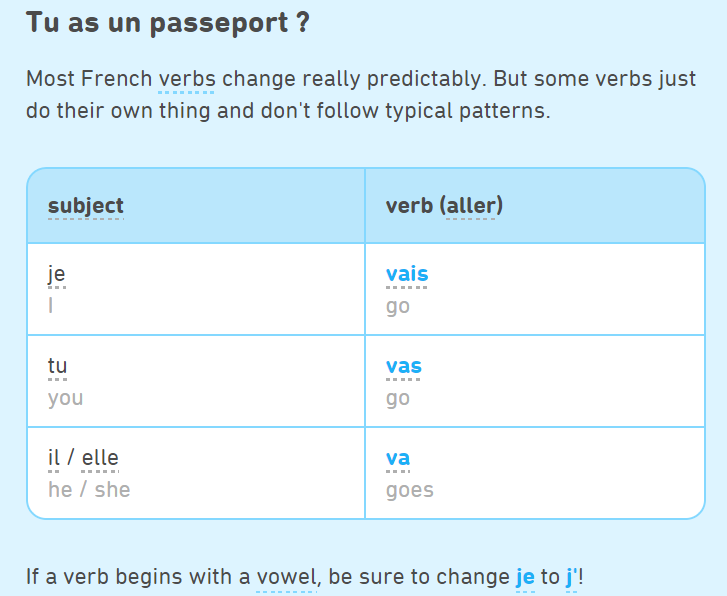
Furthermore, Duolingo provides users with unique goal-setting choices that let them tailor their learning goals depending on their schedules and preferred speed. The daily objectives that language learners may choose from, such as “casual,” “regular,” or “intense,” will depend on how they want to integrate language study into their schedule.
uTalk’s Personalized Learning uses adaptive algorithms to let learners pick the language topics they wish to concentrate on. Users are able to learn languages that fit their own requirements and interests, thanks to this personalized language selection.
While uTalk does not use adaptive algorithms in the same manner as Duolingo, it does provide some degree of personalisation due to its emphasis on useful vocabulary and conversational skills. Because of the app’s focus on active speaking practice and repetition, students can customize their learning by selecting the phrases and themes they wish to practice.
Pricing
| Platform | 1 Month Price | 6 Months Price | 12 Months Price | Number of Languages |
|---|---|---|---|---|
| Duolingo Plus | $6.99 | N/A | $84 | 43 |
| uTalk | $8.5 | $43 | $71 | 150+ |
- Price: Monthly membership plans are available for both platforms. The cost of a one-month membership to Duolingo is $6.99, whereas the cost of a one-month subscription to uTalk is $8.5. For those who want to commit for a longer period of time, Duolingo offers a 12-month plan for $84, while uTalk’s 12-month plan is more reasonably priced at $71. You can cancel uTalk’s plan anytime within 28 days with a refund. However, cancelling Duolingo plus won’t give you any refunds but you can try.
- Number of Languages: In terms of the number of languages offered, uTalk has a clear edge. Duolingo only offers 43 languages, but uTalk has over 150 in its collection. It offers a more complete choice for students looking for a variety of languages or less often taught languages.
- ROI and affordability: The effectiveness of language learning platforms relies on each student’s dedication and development. For its 12-month subscription, Duolingo offers more cheap pricing, and it provides a vast selection of languages for students to pick from.
- Nevertheless, given the abundance of more than 150 languages offered, uTalk’s cost for the 12-month package is even more reasonable. If language learners are interested in studying a particular language and can locate it in the vast library of uTalk, they may find it to be a cost-effective option.
What are the key differences between uTalk & Duolingo?
Enjoyable Learning with Games: uTalk stands out by making the first step in learning a language enjoyable through its games that cater to different learning styles. This gamified method injects enjoyment and interest into the process of learning a language.
Practical Vocabulary: uTalk aims to provide students useful vocabulary on a range of topics. Instead of overloading users with lengthy vocabulary lists, uTalk provides pertinent and practical language materials that students can use right away in everyday settings.
Native Speaker Audio: uTalk sets itself apart by providing pronunciation practice via native voice actors. In order to improve their pronunciation and speaking style, learners benefit from hearing and repeating words and phrases that are uttered by native speakers.
Flexibility for Language Learners: uTalk is designed to accommodate speakers of different languages. It allows users to learn a language from a variety of beginning places and is effective for speakers of more than 100 different languages.
Practical Focus over Full Language Mastery: Unlike some competitors that promise full language mastery, uTalk’s approach is practical and geared towards immediate use of the language. The focus is on helping students acquire conversational and practical language abilities that they may use in everyday life.
How Duolingo is Better (& for whom)?
For language learners seeking a systematic and gamified approach to language study, Duolingo is the ideal option. It’s perfect for:
- Beginners: Duolingo is very helpful for language learners who are just getting started. Its level-by-level development and engaging tasks assist novices in laying a strong foundation in the target language.
- Casual Learners: It is a terrific choice for students who want to learn a language at their own speed and fit it into their busy schedules because of its user-friendly design and bite-sized sessions.
- Gamification Enthusiasts: If you like incentives, points, and streaks, Duolingo’s gamification may keep you motivated and involved in language learning.
- Language lovers: It caters to language lovers interested in learning a range of languages, offering 43 languages to choose from, including both popular and less often taught languages.
- Self-Learners: Duolingo is suited for students who wish to take control of their language learning process without the need for official courses or professors since it is built for individual study.
How uTalk is Better (& for whom)?
Language learners who prefer a hands-on and intensive method of learning are most suited for uTalk. It’s perfect for:
- Travelers: uTalk is an excellent option for those who wish to rapidly acquire key expressions and phrases for communication throughout their vacations because of its focus on practical vocabulary and dialogue.
- Conversationalists: It’s emphasis on speaking practice and native speaker audio could prove quite helpful if your primary objective is to improve your conversational language abilities and participate in real-life interactions.
- Pronunciation Improvement: uTalk’s repetition and replication of native speaker audio is a useful tool for learners who wish to improve on their pronunciation and sound more natural in the target language.
- Immediate Language Use: It’s practical vocabulary approach allows learners to start using the language immediately. uTalk is a great option if you want to rapidly acquire practical phrasal verbs and idioms without getting bogged down in intricate grammatical rules.
Duolingo User Feedbacks
Overall, the reviews for the Duolingo app are mostly positive, praising its well-structured learning exercises that gradually build language skills without overwhelming learners.
Its user-friendly layout and adaptability for both new and devoted learners are appreciated by many people. Some commentators, however, call for the addition of new languages, notably Indian languages from various states.
The repeating of words is beneficial to certain users, particularly those with ADHD, although the pro edition of the program uses more battery life and includes more advertisements.
The restricted amount of attempts or hearts might be upsetting since students could run into problems if they make basic errors. While competition may be inspiring, mistakes can be frustrating and slow down development.
Despite the positive experiences of long-time users enjoying various language options, some reviewers mention recent disappointments. Cartoon characters and voices are seen as distracting and irritating, while there are no progress indications and a straight learning route. Furthermore, the loss of the option to debate certain phrases has been seen to be of little use to serious learners.
uTalk User Feedbacks
uTalk receives glowing reviews from users who find it to be the ideal language learning app they have been searching for. After only a few hours of using the program, many users are impressed by the efficiency of uTalk’s teaching techniques, which allow them to swiftly remember words and phrases.
It is highly regarded to have capabilities for self-recording and pronunciation practice since they help with verbal communication. The learning experience is further improved by the availability of additional units that may be unlocked using uCoins earned via achievement.
Reviewers praise the simplicity and efficiency of uTalk’s user interface and mention how much they like using the program to learn certain languages, including French Canadian.
The engaging and interactive courses include a variety of instructional activities that address many facets of language acquisition, making the experience both informative and enjoyable. The app’s many language choices, including less-taught languages, appeal to learners seeking variety.
Duolingo vs uTalk- Summary
What did We like?
While Duolingo offers a gamified language learning experience, it may not be the best fit for all learners. With limited grammar explanations, learners seeking a comprehensive understanding of language rules may find it lacking. Additionally, the repetitive exercises can lead to monotony and decreased motivation over time. While it is suitable for beginners and casual learners, those looking for in-depth cultural context and advanced language topics may need to explore additional resources. Consider other options for a more comprehensive and diverse language learning journey.
- Gamified Learning
- Structured Curriculum
- Variety of Languages
- Bite-sized Lessons
- Speech Recognition
- Community Interaction
- Offline Access
- Limited Grammar Explanation
- Repetitive Exercises
- Limited Speaking Practice
- Lack of Cultural Context
- Limited Vocabulary Scope
What did We like?
Discover the power of practical language learning with uTalk! Our app offers a unique and immersive approach, providing learners with essential vocabulary and conversational skills to use immediately. Through interactive lessons and native speaker audio, you’ll refine your pronunciation and engage in real-life scenarios. With support for over 150 languages and over 20,000 language learning combinations, uTalk is the ultimate choice for inclusive and flexible language exploration. Whether you’re a traveler, a language enthusiast, or simply looking to converse confidently, uTalk empowers you to unlock new worlds through language. Start your journey today!
- Practical Vocabulary
- Native Speaker Audio
- Immersive Learning
- Flexibility for Language Learners
- Traveler’s Companion:
- Pronunciation Practice
- Limited Grammar Explanation
- Lack of Comprehensive Language Learning
- Fewer Language Learning Features
Duolingo is suitable for beginners and casual learners with its gamified approach and structured curriculum. On the other hand, uTalk focuses on practical vocabulary and speaking practice, making it ideal for travelers and conversation-oriented learners.
Yes, Duolingo offers a free version with access to its language courses and exercises. However, it also offers a premium subscription with additional features like offline access, ad removal, and more practice opportunities.
uTalk’s effectiveness depends on your commitment and learning style. Its practical vocabulary and immersive lessons can be highly effective for developing conversational language skills and pronunciation practice.
uTalk offers a free version with limited access to language content and features. To unlock the full potential of uTalk, you can subscribe to its premium plans, which provide more lessons, offline access, and other benefits.
While uTalk can help you develop practical language skills and improve speaking abilities, achieving fluency requires consistent practice, immersion, and exposure to the language in various contexts. It can be a valuable tool in your language learning journey, but fluency may also depend on other factors like time investment and real-life language use.
The monthly plan starts from $8.5. It costs $43 for 6 months and $71 for 12 months. There is no lifetime plan available.

Meet Bill, a French language teacher and blogger who specializes in testing various language learning apps. He has been teaching French for nearly 4 decades and holds a Bachelor’s degree from Manhattanville College. With a passion for technology and how it can enhance language learning, Bill has spent years testing and reviewing different language learning platforms. His blog provides valuable insights into the pros and cons of each app, as well as tips for language learners of all levels.
